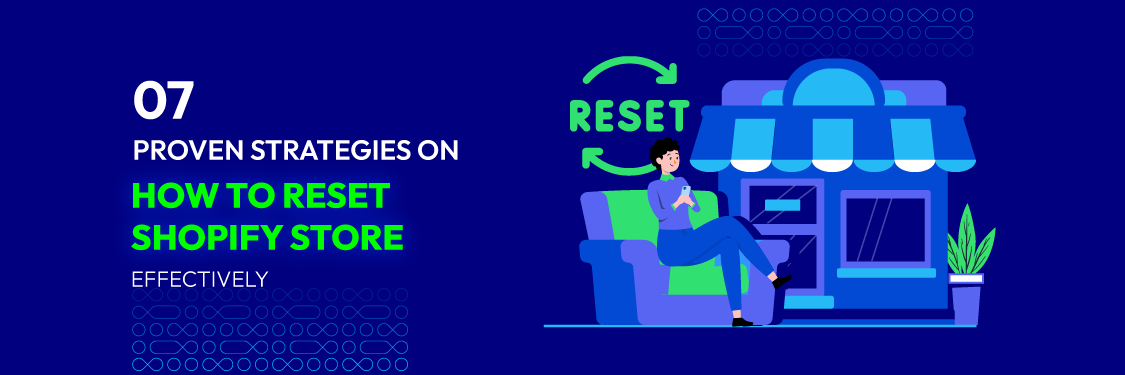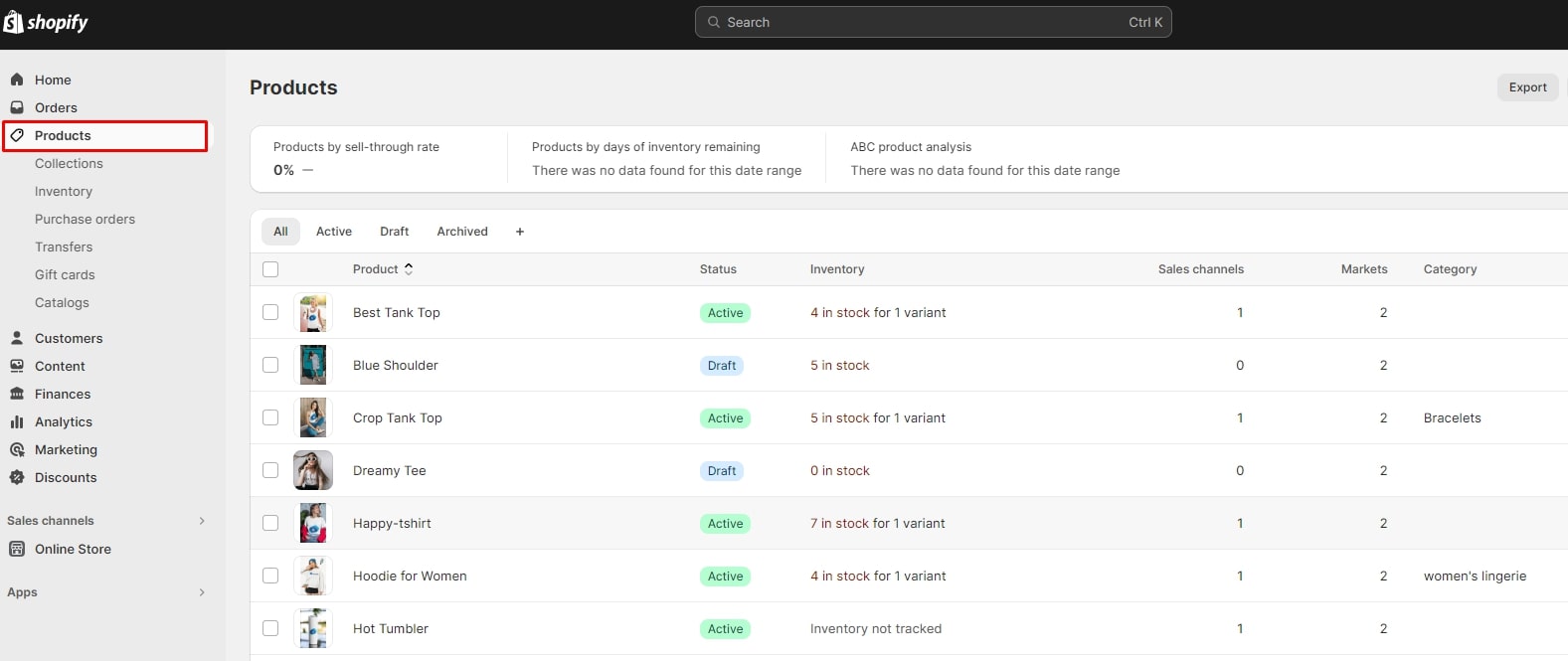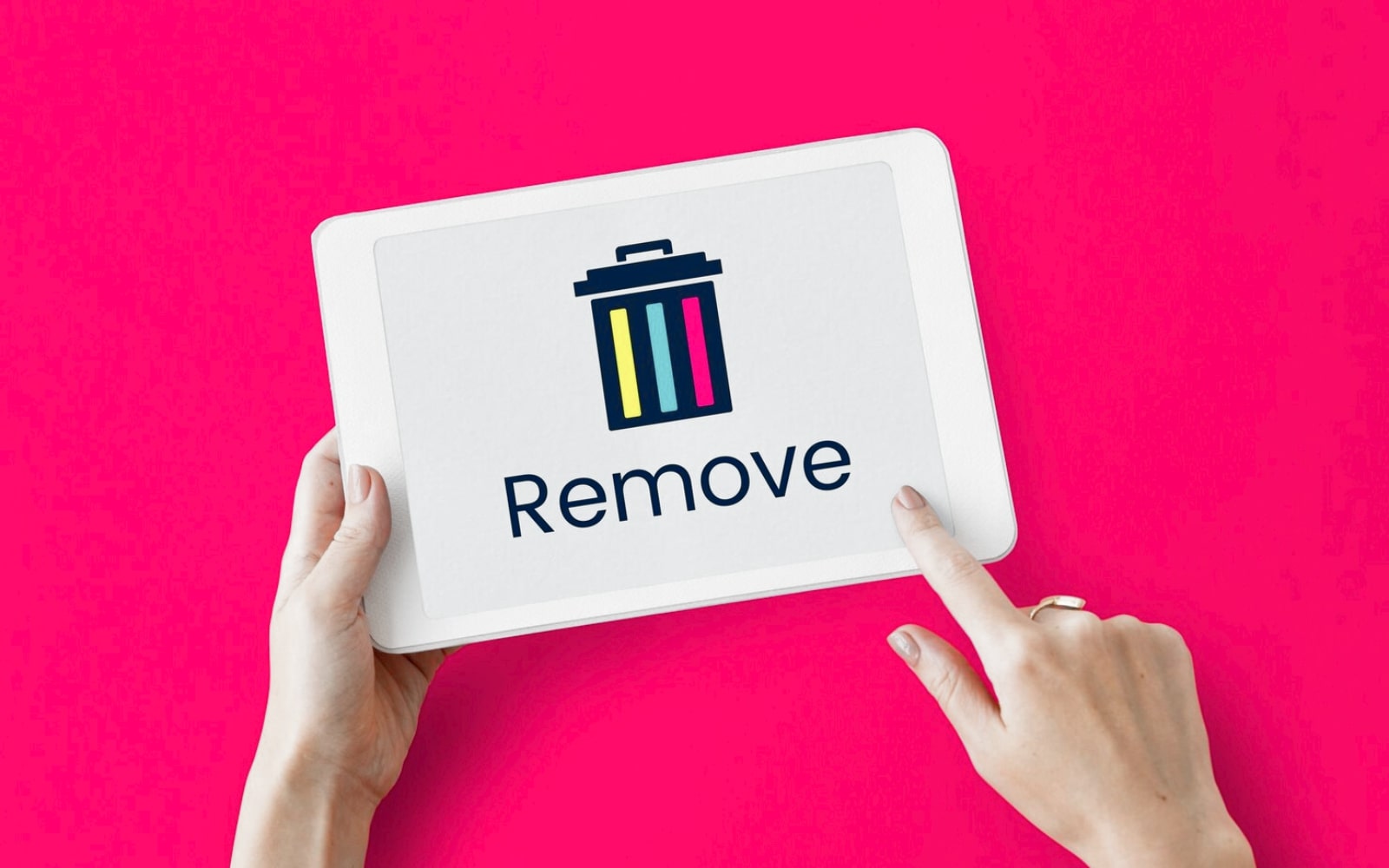7 Proven Strategies on How to Reset Shopify Store Effectively
Summer Nguyen | 01-15-2024

Resetting your Shopify site may make a big difference, whether you’re looking to rebrand, update your product line, or just get started from zero.
Throughout this extensive guide, we will take you step-by-step through the entire process, making sure you find your answers to the question – how to reset Shopify store. From preserving essential data to optimizing settings and layout, we’ve got you covered.
Now let’s get started and unlock the full potential of your Shopify store with our actionable guide.
Table of Contents
- What is a Shopify store?
- Importance of resetting your Shopify store
- What to consider before resetting your store?
- How to reset Shopify store?
- The bottom line
What is a Shopify store?
A Shopify store is like your own online space where you can market anything from handmade crafts to the latest tech gadgets. It’s a platform that handles all the technical details so you can concentrate on what you do bestselling your awesome products.

What makes Shopify a game-changer is its user-friendly interface. You don’t need to be a coding genius to set up shop. Plus, it’s got all these cool features like secure payment options, inventory tracking, and shipping management. It’s just e-commerce in easy mode.
Read more: 2023 ULTIMATE GUIDE ON HOW TO CREATE A SHOPIFY STORE
Importance of resetting your Shopify store
Resetting a Shopify store can be a significant decision, and it’s important to carefully consider the reasons behind such an action.

Businesses may decide to reset their Shopify store for the following reasons:
- Rebranding. If you’re undergoing a rebranding process and want your store to reflect a new image, resetting can help you start fresh with a new theme, design, and product lineup.
- Empty storage. Over time, a store’s structure may become cluttered with unused apps, outdated products, or irrelevant content. Resetting enables you to begin from zero, eliminating unnecessary elements and streamlining your store.
- Testing and development. During the development phase or when testing new features, it might be beneficial to reset the store to see how changes impact the overall user experience without affecting the live site.
- Changing business model. If you’re making a fundamental shift in your business model, such as moving from B2C to B2B or changing your target audience, a reset may be necessary to align your store with the new direction.
- Security concerns. In some cases, a store might experience security issues, such as a data leak or persistent vulnerabilities. Resetting the store can help address these concerns and enhance security.
Before deciding to reset your Shopify store, remember to consider the potential drawbacks. Additionally, inform your customers and stakeholders about the adjustments to reduce any potential harm to their experience.
What to consider before resetting your store?
Because resetting your Shopify store is a big decision. Therefore, before taking such a step, it’s essential to carefully consider various factors to guarantee a smooth transition and reduce any possible problems.
Understanding market trends and consumer preferences is needed for customizing a reset to meet customer demands. Extensive competition and market research can offer insights into emerging trends and innovative strategies for the reset.

Plus, the store’s reset decision is influenced by financial factors like cash flow, and profitability, requiring a reasonable budget to cover future expenses such as marketing and renovations. So, a well-planned financial plan should consider the expected return on investment and recoupment timeline.
Remember that a successful store reset also requires a detailed evaluation of the existing technological infrastructure and identification of opportunities for improvement to improve the overall customer experience.
How to reset Shopify store?
Step 1: Backup your data
Before restarting your Shopify store, make sure you have backed up your data. This is especially important if you need to start again, rearrange your products, or make big changes. Here’s a guide on how to backup your data before resetting your Shopify store:
- Log in to your Shopify admin dashboard.
- Navigate to the “Products” section and select “Export” from the dropdown menu to export your product data.
- Choose the CSV file format for simply exporting.

- Select the appropriate category or multiple categories based on your backup requirements.
- If you have customized themes or settings, export them manually by using the “Online Store” > “Themes” section.
- Review your apps and settings to identify any unique data.
- Ensure that the exported files are thoroughly checked after exporting to verify that they contain the required data.
- After ensuring your data is securely backed up, proceed with the store reset to remove all products, customers, and orders.
Remember, by exporting your Shopify store data as a CSV file, you can keep it offline on your personal computer. However, Shopify allows you to export data that it considers important, such as:
- Customer information
- Financial data
- Products
- Orders
- Gift card
- Discount codes
So, by taking these steps to backup your data before resetting your Shopify store, you’ll have a safety net to fall back on in case anything unexpected happens during the reset process. This measure ensures business continuity and enables swift store restoration if needed.
Related topic: How to Back up Shopify Store Effectively in 3 Essential Methods
Step 2: Remove products and collections
How to reset Shopify store? Removing products and collections is one of the most important strategies. Resetting a Shopify store is essential for various reasons like rebranding, starting fresh with a new product line, or resolving issues.
The following is an extensive tutorial that explains how to reset a Shopify store by removing products and collections:
- Access your Shopify admin dashboard.
- To see the list of products in your store, select “Products” using the left menu option.

- Make use of the search or filter tools to select the items you want from the list to find products quickly.
- Use the bulk action feature by selecting each product or selecting all, then choosing “Delete selected” to remove a large number of products.
- Verify the deletion of selected products by confirming the action taken by Shopify.
- Click “Collections” from the menu on the left to view and manage your product collections.
- Similarly, select the collections you want to remove and use the bulk action feature or delete them individually.
- Verify the removal of collections when asked to do so, as doing so just erases the products in the collection, not the objects themselves.
- Double-check that all products and collections have been removed from your store.
- Update navigation menus, and sections related to expired types of products, and remove broken connections to reflect changes.
- Update your inventory records if there are any stocks associated with the removed products.
- Once you have completed the removal process, save your changes to ensure that the modifications take effect.
- Preview your store as a customer to ensure it now reflects the reset state without the removed products and collections.
Don’t forget always to exercise caution when making such changes, and consider consulting with Shopify support or relevant documentation if you have any uncertainties about the process.
Step 3: Delete pages and blog posts
Eliminating unnecessary pages and blog posts can help your Shopify store run more smoothly and give your customers a more consistent and organized experience, whether you’re rebranding, starting over, or just cleaning up your online store.

How to delete pages?
- Navigate to the Shopify login page in your web browser and enter your Shopify admin dashboard information.
- On the menu on the left, select “Online Store.”
- Click on “Pages” to view all pages on your Shopify store.
- Search for the page you want to remove from the list.
- Click the page title to remove a page, scroll to the bottom, find the “Delete page” button, and confirm the deletion when asked.
- Repeat these steps for each page you want to delete.
That’s how you can delete pages on Shopify effectively.
How to delete blog posts?
- From the Shopify admin dashboard, navigate to “Online Store” and then “Blog Posts.”
- Locate the post that you wish to remove from the list.
- To delete a blog post, click on its title, scroll down to the bottom, find the “Delete” button, and confirm the deletion.
- If you have multiple blog posts to delete, repeat these steps for each one.
Remember, redirects for pages with high traffic should be put in place, important content backups should be prioritized, and post-deletion reviews of navigation menu items should be conducted. This ensures an easy browsing experience and protection in case of data loss.
Step 4: Remove themes and settings
Removing themes and settings is an essential step in resetting a Shopify store, as it helps to return the platform to its original setup. When you wish to start over, remove changes, or address difficulties that can be related to themes and settings, this step is essential.

How to remove themes?
- Access your Shopify store by logging in to the Shopify Admin dashboard.
- Go to the “Online Store” option in the left-hand navigation menu.
- Select “Themes” in the “Online Store” section to view the installed themes on your store.
- To temporarily disable a theme, navigate to the current theme and click on “Actions” next to it.
- To uninstall an active theme from your store, click on the “Actions” button and select “Remove” after deactivating it.
- Then, repeat the process for each installed theme until all custom themes are removed.
How to remove settings?
- Go back to your Shopify Admin main dashboard.
- Select “Settings” from the menu on the left to view the general store settings.
- Examine the “Settings” section and use tools like “Restore Defaults” and “Reset” to return customized setups to their original defaults in each area.
- Check third-party apps’ settings for custom configurations, as some apps may leave remnants even after removing them from the store.
- Review and update your store policies, including shipping, refund, and privacy policies, to ensure they align with your business requirements.
- Remember to save them to apply the default settings to your store.
To avoid data loss, make sure you have a backup of all important data, including orders, customer information, and product details, before starting any resets. Also, if your store is live, inform your customers about the upcoming changes, potential downtime, and any impacts on their experience during the reset process.
Step 5: Reset other settings
Resetting settings in your Shopify store is a crucial step to answer to question – How to reset Shopify store. This ensures your store operates smoothly and aligns with your updated goals.

Here’s a breakdown of why and how you might reset various settings in your Shopify store:
Theme settings
If you’ve decided to change your store’s aesthetic or have updated your brand identity, resetting theme settings allows you to start over to apply the new look.
Here’s how to reset your theme settings. First, navigate to the “Online Store” section in your Shopify admin, select “Themes,” and then choose “Customize.” Look for an option to reset settings or revert to default configurations.
Shipping settings
Resetting shipping settings to appropriately reflect your new logistics may be necessary if you decide to change your shipping strategy or providers.
This is how to change the shipping preferences. Head to the “Settings” tab in your admin, select “Shipping,” and review and update your shipping zones, rates, and methods as needed.
Payment settings
If you’re changing your payment gateways or pricing structures, resetting payment settings ensures that your customers’ transactions proceed smoothly.
So, how to reset? Follow this instruction. Go to “Settings,” choose “Payments,” and adjust your payment providers, currencies, and other payment-related settings accordingly.
Tax settings
To be acceptable, you might need to adjust your tax settings if the organization of your business or tax laws changes. Therefore, you need to take action. Under “Settings,” select “Taxes,” and update your tax settings, including tax rates and exemptions.
Checkout settings
Why should we reset? Resetting the checkout settings may be necessary when adding new features or simplifying the process.
To successfully reset the checkout settings, within “Settings,” choose “Checkout,” and customize your checkout settings, including customer accounts, order processing, and additional options.
Apps and integrations
Resetting the settings of apps guarantees excellent compatibility whether you’re switching between them or taking into account new functionality.
As a result, access the “Apps” section in your admin, select the specific app, and look for an option to reset or reconfigure settings to reset the settings of apps and integrations.
Store policies
Store policies may need to be modified due to changes in company operations or regulatory obligations. Hence, they can be reset as follows. Under “Settings,” choose “Legal,” and update your store policies, including privacy policies, terms of service, and refund policies.
Step 6: Review apps
Examining all of the linked apps in detail is a crucial step towards refreshing and rejuvenating your Shopify store. Apps are essential for improving overall store productivity, effectiveness, and customer experience.

Here’s a comprehensive guide on how to implement it:
- Perform an audit of your current apps, evaluating their relevance, performance, and impact on your store’s goals to identify which ones are beneficial or redundant.
- Prioritize essential tasks like order processing, customer interaction, and inventory management and simplify app choices to create a more productive store.
- Assess app performance for speed, reliability, and user experience, ensuring compatibility with the latest Shopify updates.
- Assess each app’s contribution to user experience, prioritizing those that enhance navigation, improve page load times, and simplify checkout processes.
- Evaluate app costs, return on investment, and benefits.
- Eliminate or replace insufficiently valuable apps and explore cost-effective alternatives.
- Be informed of the most recent developments in e-commerce and explore new apps to align with your business goals.
- Communicate with customers to get their opinions, highlight their problems, and guide decision-making for app selection or replacement to improve customer experience.
So, you can reset your store for success by carrying out a thorough evaluation, giving priority to important features, and keeping up with the most recent advancements in the app marketplace.
Step 7: Contact Shopify support
Resetting a Shopify store is a significant step that may require assistance from Shopify’s support team. If you can’t figure out how to reset Shopify store on your own, here are the steps to contact Shopify support for guidance:
- Go to the Shopify login page and input the login information you use to get in to the admin panel for your store.
- In the Shopify admin, look for the Help Center section, typically located in the top-right corner of the screen.

- Utilize the Help Center search bar to locate articles on resetting a Shopify store.
- Explore relevant articles and comprehensive documentation for instructions on resetting a Shopify store.
- To access Shopify’s support team, search for the “Contact Support” option in the Help Center or admin panel if you can’t find the required information.
- Choose from Shopify’s diverse support channels, including live chat, email, and phone, to customize your experience and meet your specific needs and urgency.
- Provide clear and concise information when contacting support to help the team understand your situation and offer appropriate assistance.
- Choose live chat or phone support for Shopify support, discuss your issue, and follow the provided instructions.
- Follow the Shopify support team’s instructions and ask for clarification if needed.
- Confirm the store reset by Shopify support’s recommendation, making sure to back up your data since resetting could cause data loss.
- After the reset, customize your store to align with your particular needs by following any further instructions or suggestions provided by the support staff.
The bottom line
Resetting a Shopify store is a straightforward process that can be easily accomplished with the right guidance. In this article, we have provided throughout explanations, broken down into clear and concise steps on how to reset Shopify store effectively.
By carefully following these steps, users can confidently navigate through the reset process, allowing them to optimize their online store and customize it to meet their evolving business requirements.
To sum up, a well-maintained and updated Shopify store is essential for success as the e-commerce industry changes, and with our comprehensive guidance, you can confidently and easily carry out the reset in the most efficient way possible.






![Top 20+ Must-have Shopify Apps for 2025 [Free & Paid] - Mageplaza](https://cdn2.mageplaza.com/media/blog/must-have-shopify-apps/top-must-have-shopify-apps.png)
![[2025 Updates] Top 10+ Upsell Apps for Shopify - Mageplaza](https://cdn2.mageplaza.com/media/blog/best-upsell-shopify-app/cover.png)